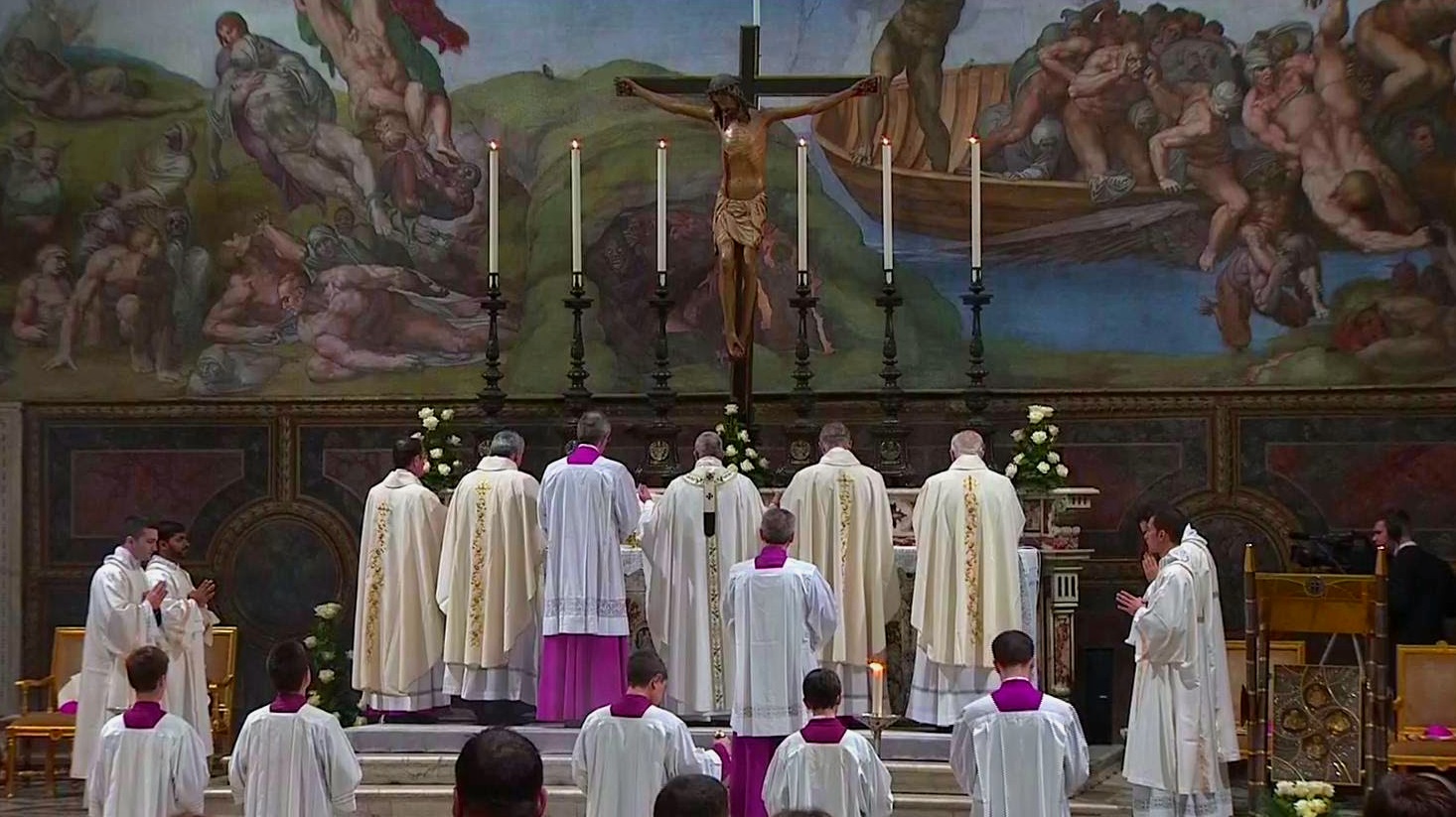I have been asked to write a series of articles about liturgy. Now I must make it clear right up front that I am not an expert in liturgy.
All I have to share is from the reading and study I have done and from my own experience first as an Anglican priest, and now as a Catholic priest.
There are plenty of good liturgical sources out there, and in this series I’ll try to link to the ones I know of to offer some assistance to those who want to know more.
This series of blog posts is prompted by the number of converts from Lutheranism and Anglicanism who come into the Catholic Church in America, not looking for a perfect church, but looking for the Catholic Church. Jennifer Mehl Ferarra writes of her experience here.
What they usually find, however, is a highly Protestantized version of Catholicism. The outward signs of this are numerous:
- architecture that is bland and devoid of Catholic symbolism and iconography
- music that is shallow, sentimental and secular in style
- liturgical ministers who seem uninformed, sloppy and irreverent
- homilies that are poorly prepared, lacking in depth and often heterodox
- altar servers who are non existent or sloppy, untrained and careless
- buildings that are poorly decorated with no sense of thought or purpose
If I criticize I hope people will take it in a positive and constructive manner. I am not criticizing the sincerity of anyone, the care and commitment to the faith of anyone, but sharing as a convert what we converts find when we come into the Catholic Church.
We all have much to learn, but if I may say so humbly–we also have something to contribute. Many of us are highly trained theologically, many come with years of pastoral experience and genuine learning, talent and experience in church architecture, art, liturgy, music, preaching, homiletics, counseling and many more gifts.
So to begin, what is the cause of the deplorable state of the liturgy in so many American Catholic Churches?
The causes are complicated, but the main, underlying factor is a shift in the understanding of the Mass after the second Vatican Council. Before the council it is fair to say that the Mass was perceived primarily as the sacrifice offered by the priest on behalf of the people.
This understanding of the Mass focussed the action on the altar and the priest, and through the priest to God. The priest prayed facing the same direction as the people because he was offering the Mass with the people and for the people. Together they faced the Lord and this meant that during the offering of the Mass the priest had his back to the people. This was because together they faced the Lord.
However, for complicated reasons, in the wake of the Second Vatican Council the focus shifted. Now the main focus was on the Mass as a family meal or as a re-enactment of the Last Supper. It should be emphasized that these other two aspects of the Mass were always present, but they were considered secondary to the idea of the sacrifice of the Mass.
Why did this shift take place? First of all there was a socio-political shift. Many wanted the church to be more democratic and egalitarian. They wanted to move away from the hierarchical church with its inevitable links to European aristocracy and monarchy. Secondly, as the Mass moved into the vernacular activists wanted the whole of Catholic worship and life to shift towards the people. Thus the push for “full participation” and relevance. Thirdly, this movement towards the people was also (perhaps unconsciously) a move away from the supernatural, transcendent aspect of the faith towards a more relevant, worldly and natural understanding. It is my opinion that the paralleled the trend in modernistic theology away from the supernatural and towards the de-mythologizing of the faith and an emphasis on the good works aspect of religion.
So what happened? Everything else had to reflect these radical changes. Round or fan shaped churches enabled as many people as possible to sit around the “family table”. Images were removed as distracting or even idolatrous. The old music was scrapped as inaccessible and boring. Folk hymns and folk masses were composed and imposed turning Mass into a kind of campfire singalong. Catechesis and preaching turned away from the Sacred Scriptures, doctrine and traditional Catholic morality to focus on that which was “relevant” and this often turned into a string of shallow bromides, sentimental fire side talks and pep talks on how to make the world a better place.
So this is what happened, but what’s to be done about it?
One of the things that has been done has been the move towards the Extraordinary Form of the Mass. I appreciate the EF, but I still remain to be convinced that this is the answer for most American Catholics. For most of them it is too much of a stretch. I realize the aficionados of the Latin Mass will disagree with me, and I respect their point of view, but I think the main value of the Extraordinary Form is that it should influence and instruct others on how to celebrate the Ordinary Form with more reverence and more respect for the great tradition.
Therefore, in this series of blog posts I wish to go through some principles of Catholic architecture, music and the celebration of the Mass in an ordinary parish–drawing on the documents of Vatican II and on my own experience.
As I said at the beginning of this post, I do not write as an expert by any stretch of the imagination, and I would be happy to hear from those who are experts so that I can learn more and grow further in my understanding as a Catholic and my work as a priest.






Leave A Comment
You must be logged in to post a comment.